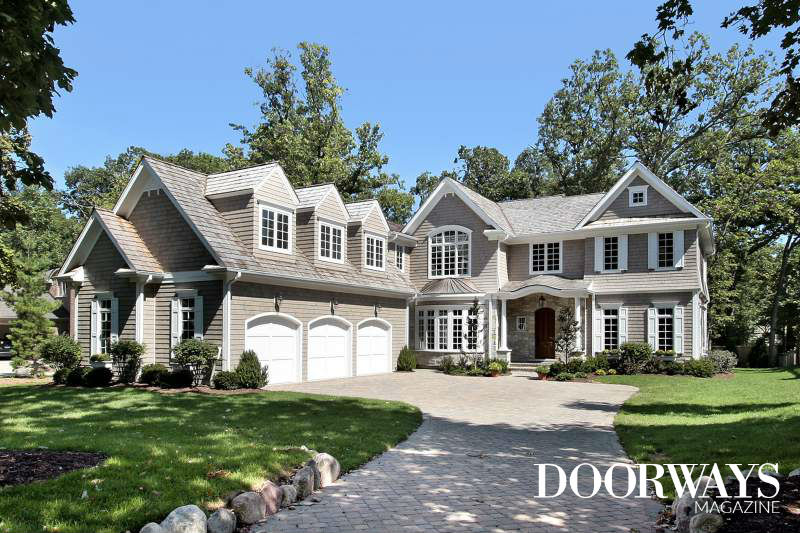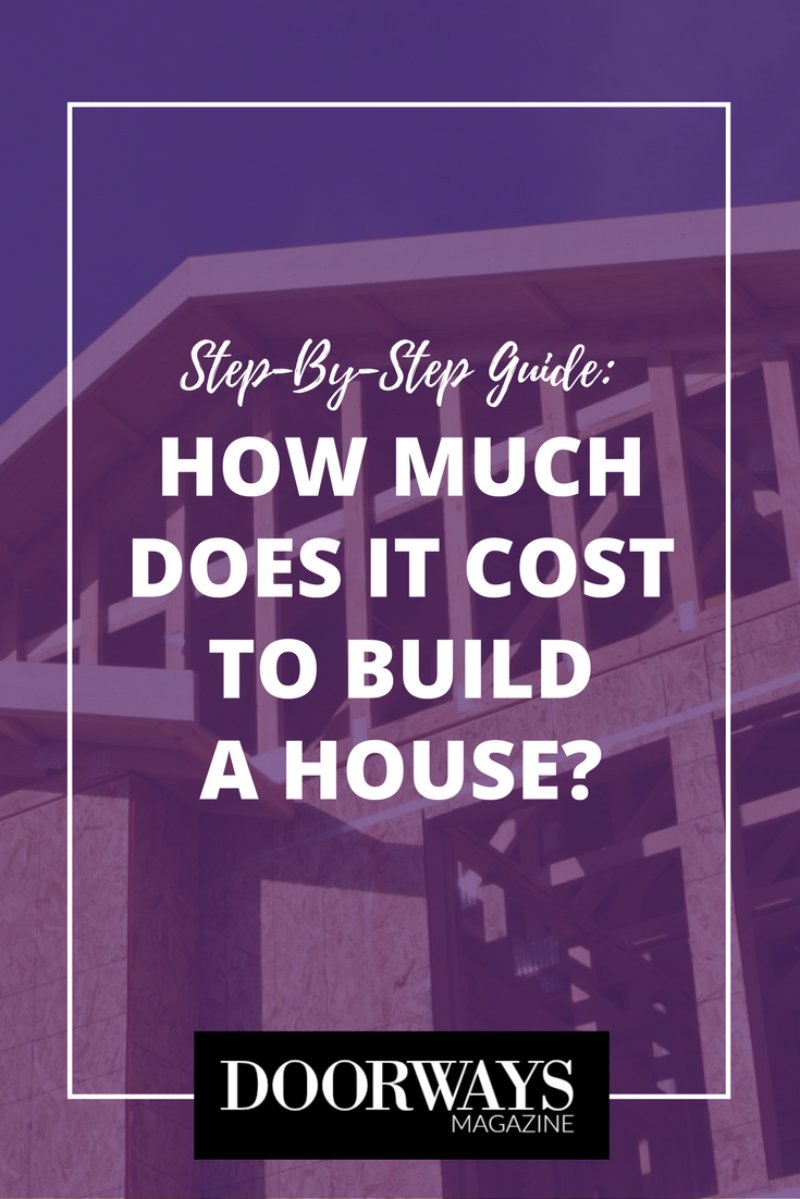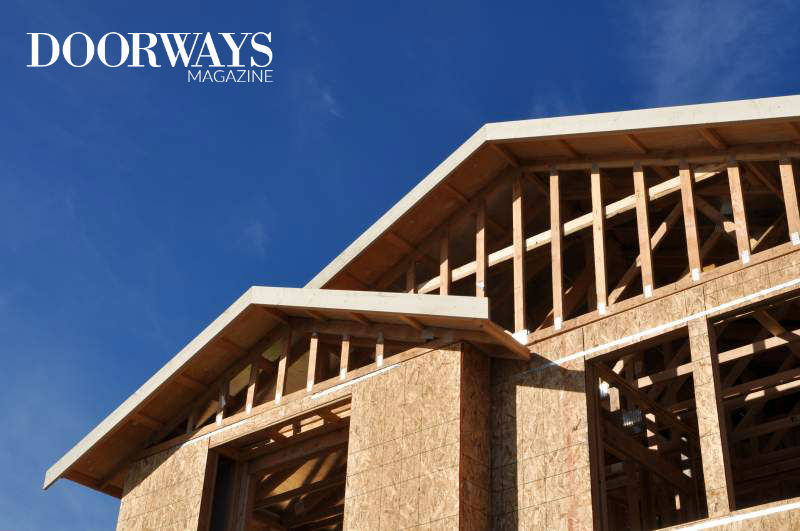Mon, Nov 12, 2018
Article may contain affiliate links. As an Amazon Associate I earn from qualifying purchases.

How much does it cost to build a house? That’s one of the top questions I get from readers every week. They say, “I want to design my own house - how much will it cost?”
If you’ve done any research about building a custom home, you’ll know that finding an answer to this question isn’t easy.
Even as an experienced home designer, it still surprises me how many ambitious homeowners take on the challenge of building their dream home each year. Somehow they manage to push through the complexity and confusion with the little information they have at hand.
Whether they reach their goals thanks to the help of a talented architect, experienced builder or on their own - their success is inspiring.
vWant to follow in their footsteps and build your dream home, too? Great! Let’s find out how much it will cost…

The Real Cost to Build a House REVEALED!
Before you start designing your dream home, it’s important to know how much it’s going to cost you. If you’ve spent anytime looking for estimates to these cost questions online - it’s clear that there are many different answers. What is the right answer?
Most of the confusion about construction costs is caused by ambiguous “cost per square foot” figures. Seems pretty simple, right? Total cost divided by total square feet?
Think again.
Sadly, estimating the cost to build a house isn’t as simple as multiplying the total square footage of your dream home by the cost per square foot. If you do this your budget will be WAY OFF.
The reason is because there are many factors left out of this equation, including purchasing land, financing and all other soft costs.
On the other side of the coin, estimating the cost to build a house is confusing because your “total square footage” is not what you’d think it would be.
When you are estimating costs per square foot, the total square footage is only for the heated or finished spaces in your home. That means the garage, basement or other unfinished spaces are not included in the square footage estimate. Instead, these costs are added to the cost of building the primary “heated spaces” of your home.
For example, if you are building a 2500 square foot home, let’s say it will cost $200 per square foot to construct the primary heated spaces of the home. To get to your final cost estimate, you’ll need to include the costs of building the garage, basement, attached porch, etc. to the total.
Let’s say that these extra costs total $62,500. If we take that number and divide by the number of square feet in the home (2,500) we get $25 per square foot ($62,500 / 2,500 = $25). Using these numbers we can estimate that the total cost to build the home will be $225 per square foot.
If we do a little more quick math, that puts our total home construction cost at $562,500 ($225 x 2,500).
As you can see, the cost per square foot is not as simple as it might seem. When I give my readers this same example they get frustrated. Their immediate response is “but.. but… I heard it only costs $125 per square foot - why so expensive?”
Sure, it might only cost $125 per square foot to build a builder spec home, but custom homes usually have a few special features and higher quality materials.
The reason it’s not easy to estimate costs is because we don’t have the entire picture. Will you have a large garage, use high-end materials or an include an unfinished basement? Any of these will change the overall cost significantly.
Tired of all the explanations? Just want a hard and fast estimate to get you started? Then, I would recommend penciling in $200 per square foot as your baseline cost estimate.
So there you have it, the (unofficial) cost to build a house: $200 per square foot.
Wait, There’s More!

As I mentioned earlier, our cost per square foot estimate is helpful, but it doesn’t paint the whole picture. In fact, there is still half of the picture missing.
You’ll need to account for a handful of other project costs like purchasing property, financing, soft costs and landscaping.
Here are other major elements to include in your budget:
Land Costs
Financing
Soft Costs (Plans, permits and fees)
Landscaping
Hardscaping
Purchasing Land
Before you start designing your dream home, you’re going to need to find a piece of land or lot first. This is actually the first step of building your own house and should not be underestimated.
For anyone that has never purchased property separately from a house, you might be surprised how complicated it can get. A few items to consider include easements, utility connections, drainage issues, zoning, CCR’s and more.
If you buy a builder-ready lot, you might not have to worry about all of these but you might have to pay a higher price for the convenience.
Construction Loan and Permanent Financing
Unlike purchasing a new home, you’ll need two loans instead of one. First, you’ll need a construction loan to pay your architect, general contractor and subcontractors as they complete the work. This loan will give you the cash to pay all of the people required to build a custom home from the ground up.
Next, after construction is complete you’ll need to roll your construction loan into permanent financing. Each of these loans will cost you points and fees - its just part of the game.
Since there is more risk to lenders to finance construction of a custom home, rates and fees will be higher than a standard 30 year mortgage. Lending requirements will also be higher, so you’ll need a great credit score and plenty of cash in the bank.
Soft Costs
A soft cost is defined as anything that is not a direct construction cost like materials, labor and equipment rentals. The most common soft costs include architectural design fees, building permits and surveys.
While these costs may seem trivial (after all, how much could all this stuff really cost?) they tend to add up fast.
A few examples of soft costs:
Architectural Design Fees (5-10% of project cost)
Design Consultants
Building Permits
Surveys
It is common for architects and home designers to charge a percentage of the project cost. Usually anywhere from 5-10 percent of the total construction cost.
Keep in mind that you’ll also have to pay any design consultants required to get your plans through the building department. A few examples include structural engineers, energy consultants (especially in California), landscape architects and geotechnical engineers just to name a few.
Don’t forget about building permits! These can cost several thousand dollars and can be the source of most of your headaches at the beginning of a project.
Due to stringent environmental concerns and local “politics,” it can take months for your simple house plans to get through the permitting process. Keep this in mind when you are planning your construction schedule.
Site Related Costs
Depending on the size and characteristics of your property, site related expenses could cost you a fortune or practically nothing.
These costs include establishing utility connections, installing a septic tank, addressing drainage issues, or drilling a well.
Have you ever wondered how water, power and sewer are “magically” connected your home? Don’t worry, you’ll find out when you’re building your dream home.
Another cost you’ll need to include in your budget is for landscaping and hardscaping. At a minimum you’ll need a driveway and walkway. But, you’ll probably want a big deck and beautiful landscaping including flowers, shrubs and mature trees. Beware: these costs add up fast!
Common site related costs:
Utility Connections
Landscaping
Hardscaping
Download My Cost to Build a House Worksheet
Okay, so we covered some of the biggest expenses you’ll encounter while building your dream home. Want to take your budget to the next level? Download my cost to build a house worksheet - it’s completely free!
The worksheet includes a detailed breakdown of construction hard costs and estimates to help you determine how much house you can afford. Remember, these are just estimates.
You’ll have a better idea of how much your dream home will cost after you find land to build on, start working with an architect and getting bids from contractors.
READ NEXT
